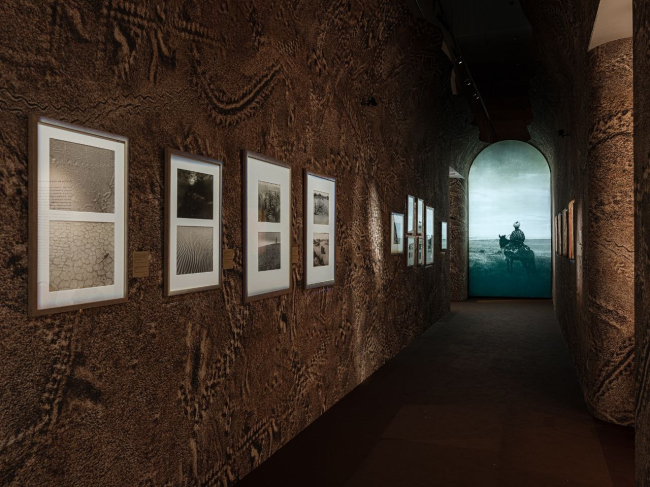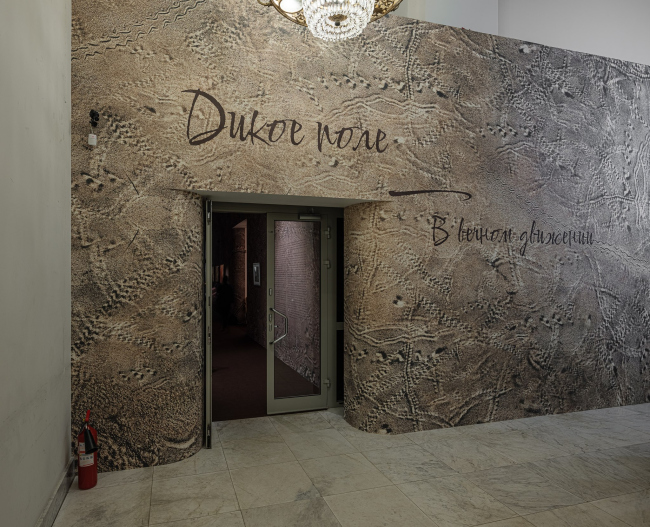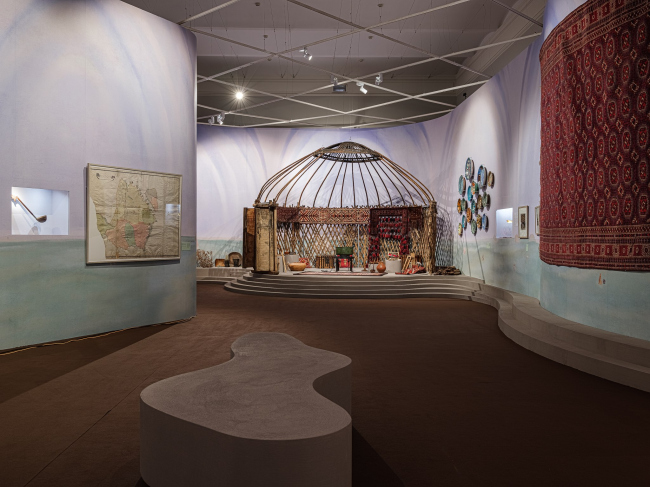|
Published on Archi.ru (https://archi.ru) |
|
| 17.04.2024 | |
|
The Steppe Is Full of Beauty and Freedom |
|
|
Julia Tarabarina |
|
| Studio: | |
| Chart Studio | |
|
The goal of the exhibition “Dikoe Pole” (“Wild Field”) at the State Historical Museum was to move away from the archaeological listing of valuable items and to create an image of the steppe and nomads that was multidirectional and emotional – in other words, artistic. To achieve this goal, it was important to include works of contemporary art. One such work is the scenography of the exhibition space developed by CHART studio. Sergei Tchoban, Alexandra Sheiner, and Elizaveta Borisova (CHART studio) designed the exhibition layout for the “Wild Field” exhibition at the State Historical Museum. The exhibition is multimedia, comprehensive, and dedicated to the Eurasian nomads in the broadest sense of the term. Its task is to go beyond the boundaries of the archaeological narrative that usually accompanies nomadic cultures, and to vividly show, or perhaps to make one even feel what the “great steppe” of the past centuries was like. The title of the exhibition itself, “Wild Field” outlines the place, as if pointing to the territories of the Black Sea and Azov steppes, but the composition of the exhibition also includes nomads from the Caspian region, Kalmyks, Uzbeks, and Kazakhs, thus expanding the exhibition’s geography. The range of exhibits is also wide: from paintings, books, and ethnography to archaeology – spanning approximately 2000 years. The exhibition "Wild Field. In Perpetual Motion". State History Museum, 2024Copyright: Photo © Vasily Bulanov / provided by CHART studioThe corridor’s materiality shapes the entrance, or rather spills into the interior of the exhibition space at the State Historical Museum, formerly the building of the State Duma. The exhibition "Wild Field. In Perpetual Motion". State History Museum, 2024Copyright: Photo © Vasily Bulanov / provided by CHART studioUpon entering the corridor, however, you need to turn right to enter the Hall of War. Here we see the fierce and terrifying nomadic warriors, including a sculpture specifically created for the exhibition by Buryat sculptor and founder of the architectural company Parsec, Dashi Namdakov. Interestingly, this sculpture is presented not entirely as an exhibit: the authors primarily use its shadow, outlined by oblique light, as the shadow of a fearsome nomad. Overhead, there is a “dome of arrows”. One can imagine, as is sometimes seen in movies, a cloud of arrows flying and beginning to descend on the heads of the enemy. Or on the visitors’ heads in our case.  The exhibition "Wild Field. In Perpetual Motion". State History Museum, 2024Copyright: Photo © Vasily Bulanov / provided by CHART studio The exhibition "Wild Field. In Perpetual Motion". State History Museum, 2024Copyright: Photo © Vasily Bulanov / provided by CHART studioThe arrows are lightweight, plastic, and well secured on the ceiling, but a few visitors admitted to me that it was a bit scary to walk underneath them. The impression is complemented by Nicholas Roerich painting “Tombs in the Desert” from 1930, enlarged and adapted. The actual painting, curiously, is quite small, but it is also present here among the other exhibits. This continues further: a painting or engraving on the wall or the entire wall matching the subject. In the next “Hall of Peace”, it’s Pavel Kuznetsov pictures and drawings on the wall inspired by his painting, but unlike Roerich’s, they are reduced in size, reorganized, and sunk into a blue haze. For some reason, they remind me of a Chinese room with silks in Peterhof.  The exhibition "Wild Field. In Perpetual Motion". State History Museum, 2024Copyright: Photo © Vasily Bulanov / provided by CHART studio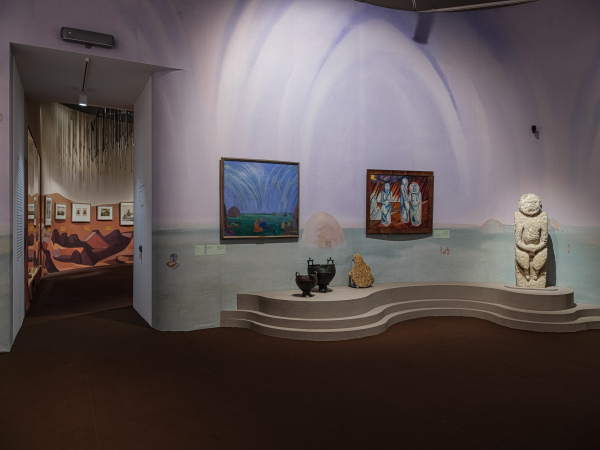 The exhibition "Wild Field. In Perpetual Motion". State History Museum, 2024Copyright: Photo © Vasily Bulanov / provided by CHART studioThe exhibition "Wild Field. In Perpetual Motion". State History Museum, 2024Copyright: Photo © Vasily Bulanov / provided by CHART studioIn each hall, there is an “anchor” exhibit. In the Hall of War, it’s the shadow of a nomad, in the second one, it’s an ancient stone faceless statue of a Polovets woman and a museum yurt. And in each, there is some music playing, sometimes stopping, and sometimes starting again. Interestingly, the Scythian mound has no “accent” in it. Here, the entire mound is the accent, the core, and the prototype of the entire exhibition. I think Sergey Tchoban and Alexandra Sheiner made this mound a figurative “anchor” or the “main pivot” of the entire exhibition. The whole exhibition is also a kind of mound, but a small black mound made entirely of steps: here is a false vault; here is a false arch, while the exhibition itself is smooth. However, precisely because of the analogy with the mound, the dome of arrows is so important. For the steppe, the whole world is one big mound, and the mound, on the contrary, is the afterlife analogue of the whole world, that is, the steppe. So the exhibition develops not so much from the entrance as from its center, the place where the most valuable and beautiful items are showcased. 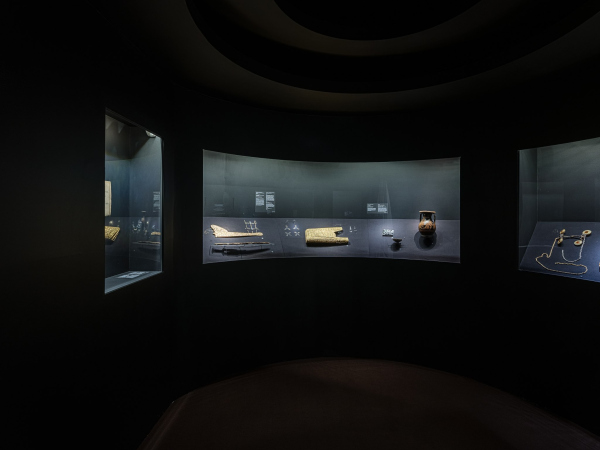 The exhibition "Wild Field. In Perpetual Motion". State History Museum, 2024Copyright: Photo © Vasily Bulanov / provided by CHART studio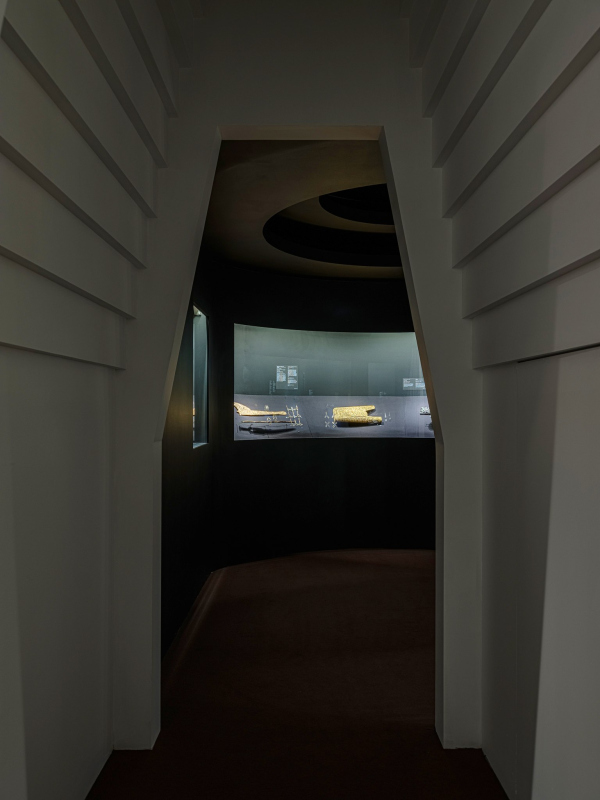 The exhibition "Wild Field. In Perpetual Motion". State History Museum, 2024Copyright: Photo © Vasily Bulanov / provided by CHART studioThat is, first, we’re immersed in war, then in peace, and then brought back to the origins. However, even after that, in the large hall dedicated to the Cossacks and the nobility with steppe roots, as well the Nogais and the Kalmyks, the types of accents change. Here, there are two small but atmospheric video projections, one showing rolling fields, the other clouds, both moving somewhere unknown. You will also find felt soft toys and costumes here.  The exhibition "Wild Field. In Perpetual Motion". State History Museum, 2024Copyright: Photo © Vasily Bulanov / provided by CHART studio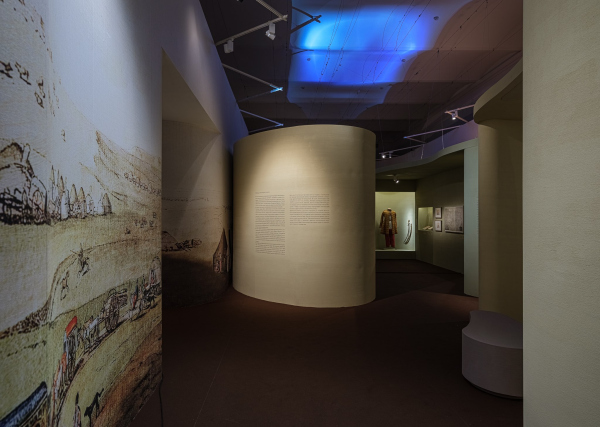 The exhibition "Wild Field. In Perpetual Motion". State History Museum, 2024Copyright: Photo © Vasily Bulanov / provided by CHART studioHowever, the main focus here is on the books, there are plenty of them here, and the curls of the stands resemble not so much pages as fragments of scrolls. The graphics on the walls also match the topic: the engraving by Christian Gottlieb Geissler “The Life of the Kipchaks”. It provides the most definite, book-documentary immersion into space; if what we saw earlier were halls of emotions, here is the document hall. 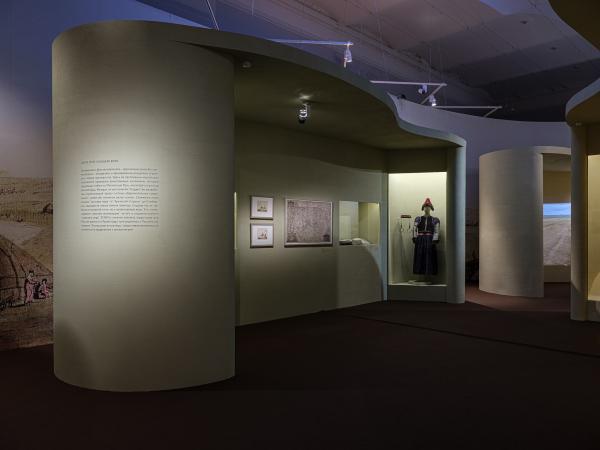 The exhibition "Wild Field. In Perpetual Motion". State History Museum, 2024Copyright: Photo © Vasily Bulanov / provided by CHART studio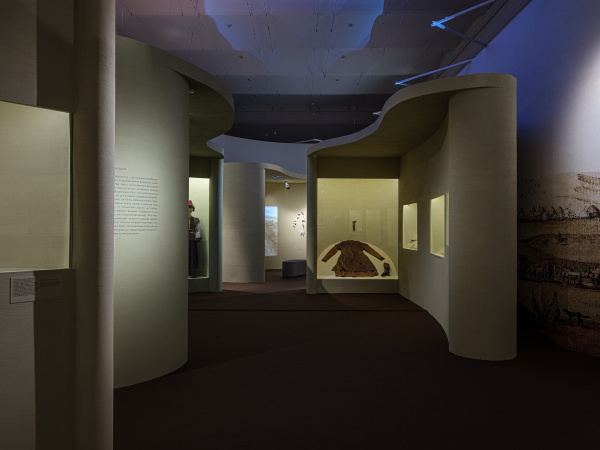 The exhibition "Wild Field. In Perpetual Motion". State History Museum, 2024Copyright: Photo © Vasily Bulanov / provided by CHART studioThis hall quite accurately expresses the essence of the steppe: there aren’t many sources about it, and the information is fragmented. Well, the scroll of the sky also comes to mind as well. The scroll of the sky on the ceiling, scrolls of stands with books inside on the sides… As you pass through the exhibition, it feels like flipping through a book or a scroll, where, entering each hall, we practically “dive in”, as it was in children’s books, into a miniature picture – not into a movie! A fascinating effect! *The headline uses a line from Yuri Shevchuk’s song “Wolves in a Shooting Range”. |
|
